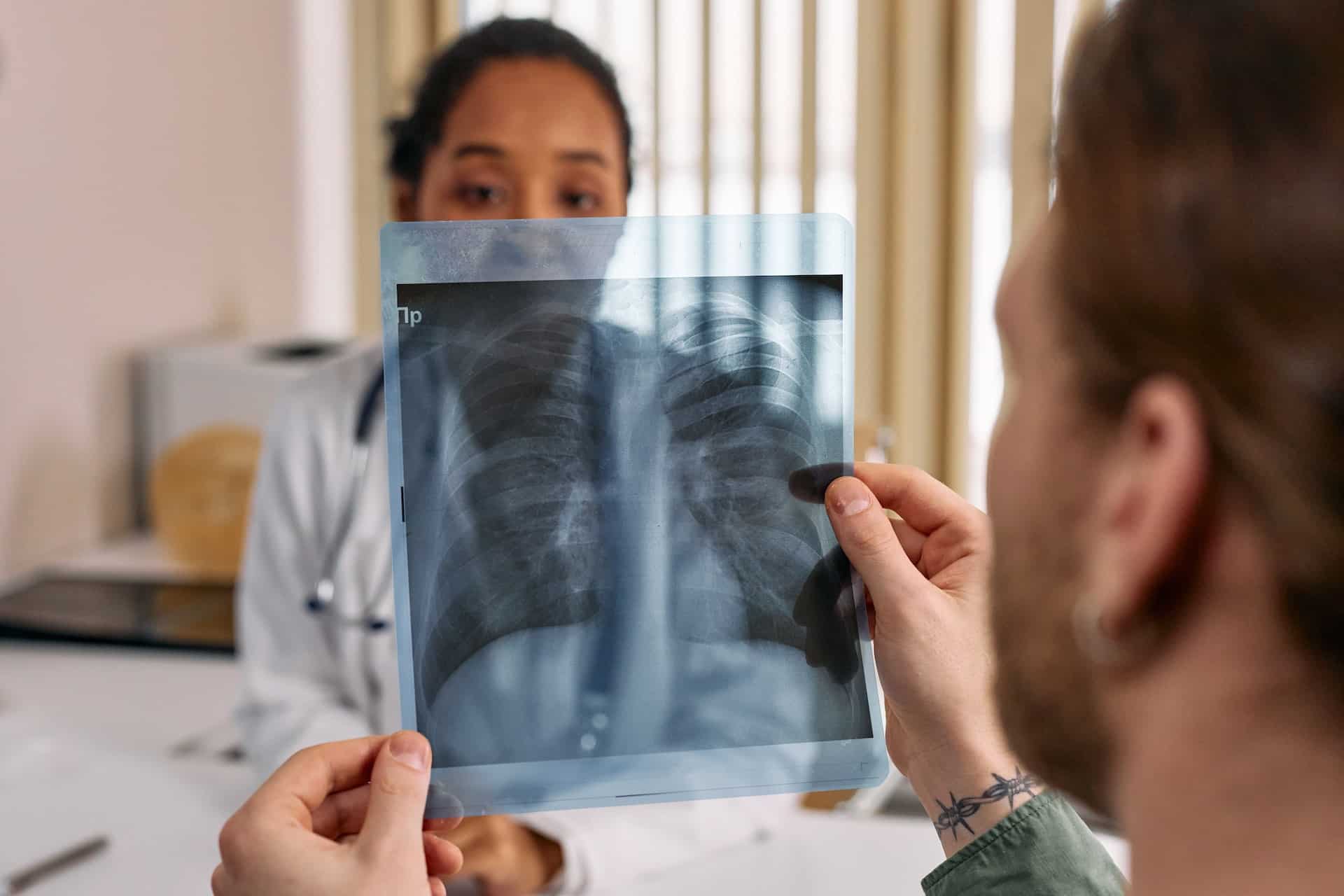What's that one clinic that you visit to get your routine checkup? Or what is the one place you visited most during COVID-19? It must be Mayo Clinic.
Everyone worries about diseases, but there is one place where you can find a cure for almost every disease: Mayo Clinic. Since Mayo Clinic holds a significant role in our lives, today we have decided to conduct a Mayo Clinic SWOT Analysis.
Many of you would know about Mayo Clinic, but for those unaware, let me give you a brief intro about the place. Mayo Clinic is a nonprofit medical research group based in Rochester, Minnesota. It is one of the most respected medical centers in the United States. It is known for its expertise in various medical specialties.
Mayo Clinic comprises several hospitals, clinics, and healthcare facilities. It is dedicated to providing the highest quality care to its patients. The organization is known for its cutting-edge research and innovative treatments. It strongly focuses on education and training for medical professionals and the general public.
Mayo Clinic was founded in 1889 by Dr. William Worrall Mayo, a British-born doctor who had settled in Rochester, Minnesota. Dr. Mayo had a small private medical practice and was joined by his sons, Dr. William J. Mayo and Dr. Charles H. Mayo, in the late 1800s.
The Mayo brothers were known for their innovative approach to medicine and their commitment to providing the highest quality care to their patients. In the early 1900s, Mayo Clinic began to expand, adding more hospitals and clinics to its network and attracting top medical talent from around the country.
The organization is known to have a competent staff that works together to diagnose and treat patients. As a result, Mayo Clinic continued to grow and evolve over the years. Today it is one of the world's largest and most respected medical centers.
The organization has a strong focus on research and education. It has made significant contributions to the field of medicine through its work on various medical conditions and diseases. The Mayo Clinic has consistently been ranked as one of the top hospitals in the US by various organizations, including U.S. News & World Report.
The Mayo Clinic has also been recognized for its work in patient experience and satisfaction. It is known for its high-quality, patient-centered care. Overall, the Mayo Clinic has a long and distinguished history of advancing the field of medicine and improving the health and well-being of people around the world.
Currently, Mayo Clinic is present in 44 communities in four regions. It has 16 hospitals, 53 multispecialty clinics, and one mobile health clinic. Mayo Clinic successfully treats more than 600,000 patients each year.
The health facility is a significant source of employment for healthcare workers. It provides employment to 73,000 people, including doctors, nurses, and other administrative staff.
Now that we have discussed the history and current operations of Mayo Clinic enough, let's proceed further and look at what SWOT Analysis is.
SWOT analysis is a strategic planning tool to evaluate an organization or project's strengths, weaknesses, opportunities, and threats. A SWOT Template highlights the internal and external factors that can impact the success of a business or venture.
Now that you are aware of what SWOT Analysis is, let's move ahead and conduct a Mayo Clinic SWOT analysis.
Mayo Clinic's Strengths

The strengths section of a SWOT analysis is a list of an organization's characteristics that give it an advantage over its competitors. These are the qualities that the organization does well and that set it apart from others in its industry. Let's look at what strengths Mayo Clinic possesses.
Strong Reputation
Mayo Clinic is known for its expertise in various medical specialties. It is also known for its high-quality care and its commitment to providing the best possible treatment and outcomes for its patients.
The organization has a strong reputation for excellence in the medical field. Various organizations consistently rank it as one of the top hospitals in the United States.
This approach is designed to provide the most comprehensive and effective care possible. It is one of the reasons the Mayo Clinic is considered one of the top medical centers in the United States.
Research And Innovation
Mayo Clinic has a strong focus on research and innovation. It is dedicated to advancing the field of medicine through its work.
The organization has made significant contributions to the field of medicine through its research on various medical conditions and diseases. The healthcare facility has a budget of $625 million for research and innovation.
Mayo Clinic's research efforts are supported by several state-of-the-art research facilities, including the Mayo Clinic Research Center, the Mayo Clinic Center for Individualised Medicine, and the Mayo Clinic Cancer Center.
These facilities are equipped with the latest technology and staffed by top researchers, enabling Mayo Clinic to continue to make essential contributions to the field of medicine and to develop innovative treatments and approaches to patient care.
Team-based Approach
Teams of doctors and other medical professionals with expertise in different areas collaborate to evaluate and treat patients at Mayo Clinic.
For example, a patient with a complex medical condition might be seen by a team of doctors, including a primary care physician, a specialist in the relevant medical area, and other medical professionals.
This team-based approach allows for a more holistic and comprehensive approach to patient care, as doctors with different areas of expertise can collaborate and share their knowledge to provide the best possible treatment plan for the patient.
Mayo Clinic's team-based approach to patient care is one of its key strengths. Moreover, it is a key part of its philosophy of providing the highest quality care to its patients.
The organization is known for its commitment to collaboration and teamwork. Its team-based approach to care has helped it succeed in diagnosing and treating patients with a wide range of medical conditions.
Mayo Clinic's Weaknesses

The weaknesses section of a SWOT analysis highlights the factors of an organization that place it at a disadvantage relative to its competitors. These are areas where the organization is weaker or less successful than its competitors and may be holding it back from achieving its goals. So now, let's see what factors hinder the growth of the Mayo Clinic.
High Operational Cost
Mayo Clinic has a highly trained and experienced workforce in the field. Unfortunately, this level of expertise and experience comes with a high cost, as these medical professionals command high salaries.
Mayo Clinic also has a large budget for research and innovation. However, this also adds to the organization's operational costs, as funding research and innovation requires a significant investment of financial resources.
Controversies
Mayo Clinic has been in the line of controversies for quite some time. Undoubtedly, the healthcare facility is one of the best in the U.S. However, several controversies have damaged the name of the Mayo Clinic.
For example, once a patient accused Mayo Clinic of "Medically Kidnapping" her. He accused Mayo Clinic that it was keeping her admitted against her will.
Moreover, another family claimed that Mayo Clinic doctors stopped giving their daughters painkillers just a few days after surgery. This made their daughter suffer in pain, and they accused the hospital of having incompetent staff. All these controversies create a negative impact on the image of the Mayo Clinic.
Limited Presence
A limited number of hospitals can be considered a weakness of the Mayo Clinic in several ways. For example, having fewer hospitals may limit the organization's ability to reach and serve a wider geographic area, potentially reducing the number of patients it can treat.
Additionally, having fewer hospitals may limit the organization's ability to offer a wide range of medical services and specialties. Moreover, having a limited presence may also limit the organization's bargaining power with insurance companies and other payers, which could potentially impact the organization's financial performance.
Mayo Clinic's Opportunities

Opportunities are external factors that an organization can leverage to grow and improve its performance. The opportunities section of a SWOT analysis is used to identify these external factors.
By taking advantage of opportunities, an organization can work towards achieving its goals and objectives. In this context, the opportunities section will identify the external opportunities for Mayo Clinic.
Expanding To New Geographical Locations
Expanding the presence of the Mayo Clinic to new geographic locations could bring several benefits to the organization. By establishing hospitals or clinics in new areas, Mayo Clinic could reach and serve a larger patient population, potentially increasing the organization's revenue and profitability.
This expansion could also allow Mayo Clinic to tap into new markets and potentially gain a competitive advantage over other healthcare providers in those areas. Additionally, expanding its presence to new locations could allow Mayo Clinic to diversify its patient base and reduce its reliance on any particular market or region.
This could make the organization more resilient to external factors impacting its performance, such as changes in healthcare policies or economic conditions. Overall, expanding its presence to new geographic locations could provide Mayo Clinic with a significant opportunity to grow and improve its performance.
Partnering With Other Healthcare Institutions
Partnering with other hospitals, health systems, or research institutions could provide Mayo Clinic several benefits. By partnering with these organizations, Mayo Clinic could expand its capabilities and reach, potentially increasing its patient base and revenue.
For example, Mayo Clinic could partner with a hospital in a new geographic location to establish a presence in that area or partner with a research institution to access new technology or expertise that it does not currently have in-house.
Partnering with other organizations could also allow Mayo Clinic to share resources and expertise, potentially increasing its efficiency and effectiveness. For example, Mayo Clinic could partner with a health system to jointly invest in new medical equipment or to share administrative and support staff.
Adopting Latest Technology
Investing in new technologies or innovations, such as telemedicine or artificial intelligence, could provide Mayo Clinic with several benefits. For example, implementing telemedicine services could allow Mayo Clinic to provide patient care remotely, potentially increasing access to care for patients in underserved or rural areas.
For example, Mayo Clinic could use artificial intelligence to analyze patient data and identify patterns or trends that could help to improve diagnosis and treatment planning. Artificial intelligence could also potentially automate certain administrative tasks, such as scheduling or insurance claims processing, freeing time for healthcare providers to focus on patient care.
Mayo Clinic's Threats

Threats section identifies external factors that could harm an organization. These threats could include competition, changes in market conditions, new regulations, technological advancements, and economic recessions.
An organization needs to identify and understand these threats to develop strategies to mitigate or address them. In this context, the threats section will examine the external threats faced by Mayo Clinic.
High Competition
Competition from other healthcare providers can be a significant threat to Mayo Clinic. Competition can come from various sources in the healthcare industry, including other hospitals, clinics, and healthcare systems.
Suppose other healthcare providers can offer similar or superior services at a lower cost. In that case, they could potentially attract patients away from Mayo Clinic, reducing the organization's revenue and profitability.
Competition can also come from non-traditional healthcare providers, such as retail clinics or online medical services, potentially disrupting the traditional healthcare delivery model and impacting Mayo Clinic's business.
Changes In Healthcare Policies
Changes in healthcare policies or regulations can significantly threaten Mayo Clinic. The healthcare industry is highly regulated, and changes in policies or regulations can impact how Mayo Clinic operates and delivers care to its patients.
For example, changes in reimbursement policies or coverage requirements could affect the organization's revenue and profitability. In addition, changes in regulations related to patient privacy or data security could also impact Mayo Clinic's operations and compliance costs.
Extreme Patient Load
An increase in patient volume due to another wave of COVID-19, or any other health crisis, could be a significant threat to Mayo Clinic.
Suppose the organization experiences a sudden and extreme increase in patient volume. In that case, it could potentially strain the organization's resources and capacity, potentially leading to delays in care or reduced quality of care.
This could impact the organization's reputation, financial performance, and the satisfaction of its patients and healthcare providers.
Mayo Clinic SWOT Analysis: Final Word

Mayo Clinic is one of the most trusted and renowned healthcare facilities in the U.S. It is famous for providing the best treatment to patients in person and online. In this article, we discussed the history of the Mayo Clinic in detail.
After that, we conducted Mayo Clinic SWOT Analysis to know what internal and external factors impact Mayo Clinic. After reading this article, we assume you would have learned how to conduct a SWOT analysis. You can also represent the SWOT analysis findings in the form of a SWOT Matrix to make it look more concise. If you want to learn more about SWOT analysis, look at some more SWOT analysis examples.









